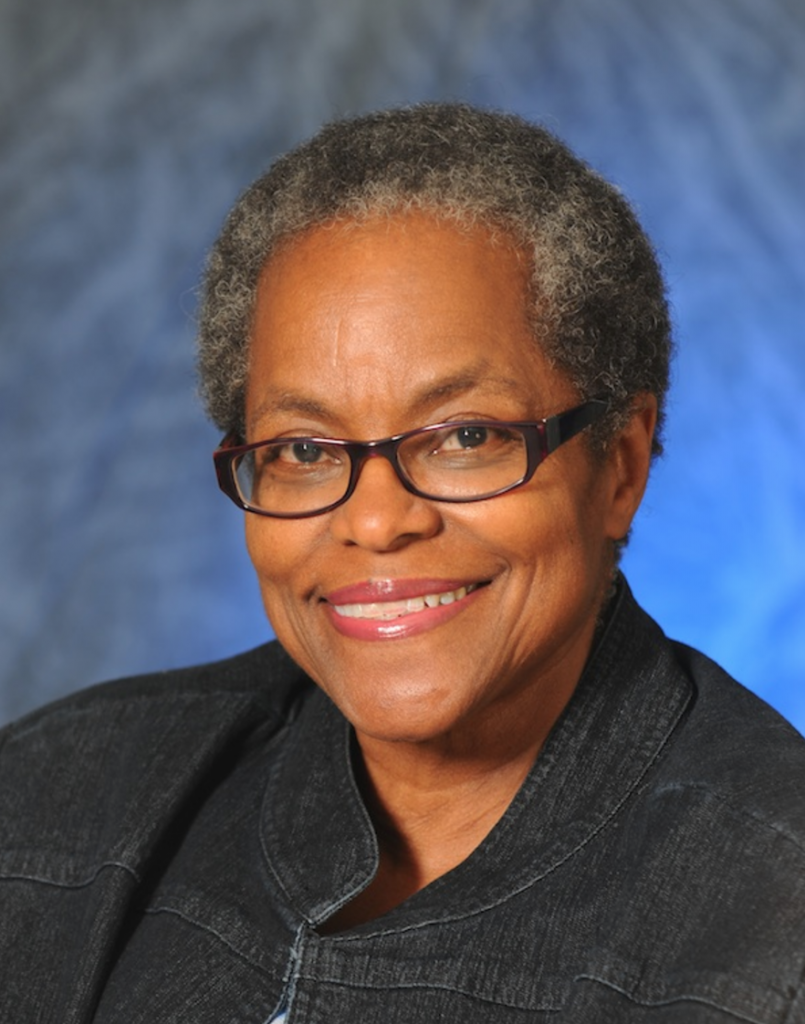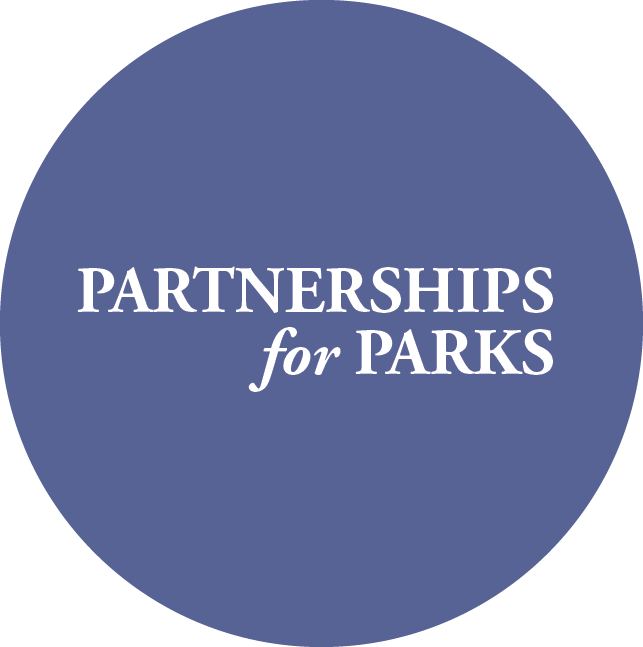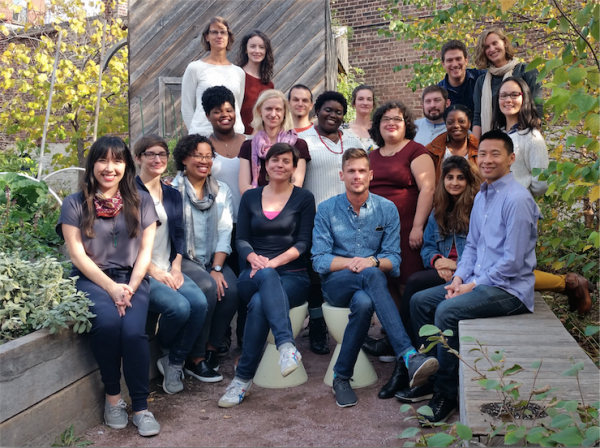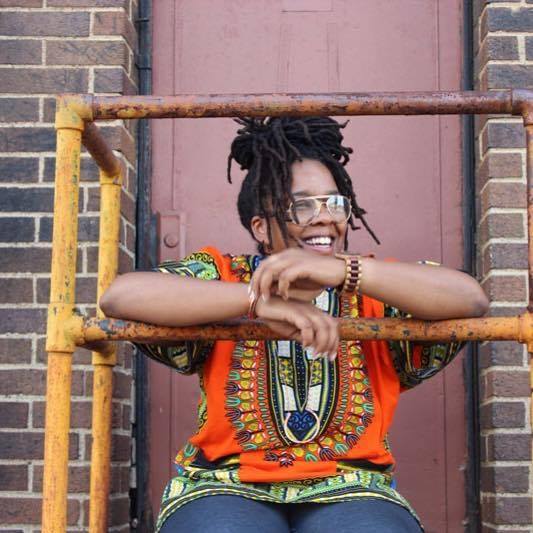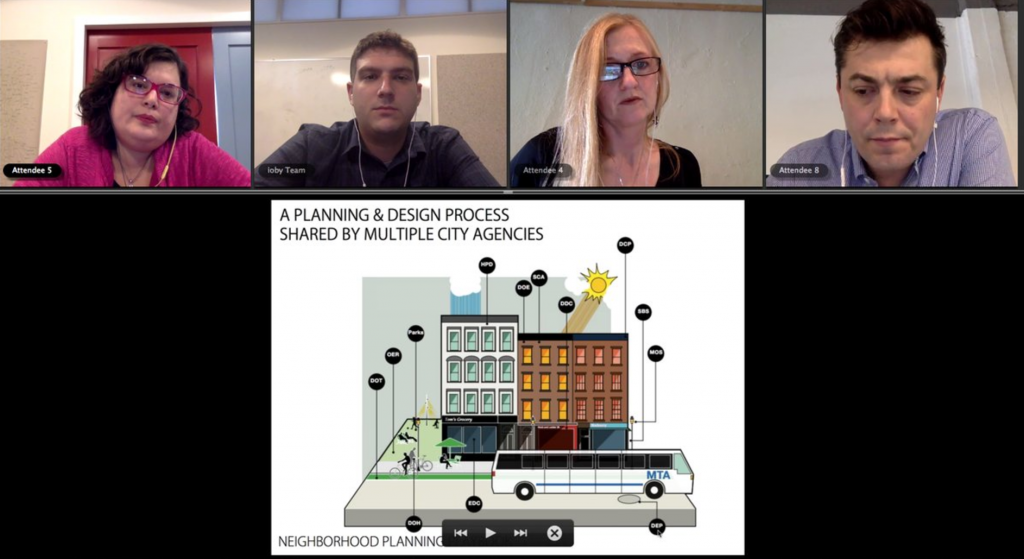Acts of creative placemaking are fabulous in every season, but they’re particularly poised to shine in the summertime, when days are long, plants are in bloom, and people are outdoors.
Category Archives: Uncategorized
Meet Harriet Tregoning, ioby’s Newest Board Member!
At ioby, our Board of Directors has long been one of our greatest resources, and it’s difficult to overstate how essential this incredible group of people has been in shaping our organization. From a leading role in establishing and embodying our mission and values, to practical and expert guidance of our tactical work in our cities of focus, it’s safe to say this is no typical nonprofit board. The bar is set high.
Continue reading Meet Harriet Tregoning, ioby’s Newest Board Member!
Why we’re so excited about June 21: Meet our honorees!
ioby’s Summer Party is almost upon us! (In the New York area? It’s not too late to snag a ticket to this June 21 shindig!)
We’re excited to party with ioby leaders, partners, neighbors and friends, and to celebrate all the amazing work being done in neighborhoods across the US.
We’re ESPECIALLY excited to toast the achievements of our Summer Party honorees, truly some of the most incredible people we know.
So why are we so star-struck? Keep reading!
Joyce Moore
Joyce Moore is a many-time ioby Leader who has brought art, fresh food, affordable housing, and more to her Indianapolis neighborhood through her innovative social enterprise. Joyce and her family’s passionate commitment to staying in and improving their neighborhood through decades of changes is a true inspiration to all of us at ioby. Together with her son, Justin, she co-founded Urban Patch, LLC whose goal is “To Make the American Inner City Better” by bringing the Greatest Generation ideals into the future of the American inner city community—through urban gardening, housing preservation, food justice work, education, strides forward in green infrastructure, and more.
Micah L. Sifry
Micah is Co-Founder and Executive Director of Civic Hall, as well as Co-Founder of Personal Democracy Media, which produces the annual Personal Democracy Forum conference on the ways technology is changing politics. In addition, he consults on how political organizations, campaigns, non-profits and media entities can adapt to and thrive in a networked world. Micah’s work has been foundational in the way we at ioby think about the power of technology to spark civic engagement and strengthen social movements – he’s lived, breathed, and made waves at the forefront of civic tech for decades.
Partnerships for Parks
Partnerships for Parks has enabled thousands of New Yorkers to become dedicated advocates, stewards, and organizers around parks and open spaces in the city. This joint program of NYC Parks and City Parks Foundation equips communities to take a leadership role in improving and managing some of our greatest assets: our green spaces.
An update on funding racial justice trainings
By Erin Barnes
This blog is an update from the piece I wrote in October about ioby’s rationale behind, plan to develop and approach to funding an antiracism framework. You can read the original piece here.
After I published the blog, a lot of nonprofit executive directors have asked me that I “let them know how it works.” I’ve been keeping them updated informally, but I wanted to share things publicly with executive directors who I may not know.
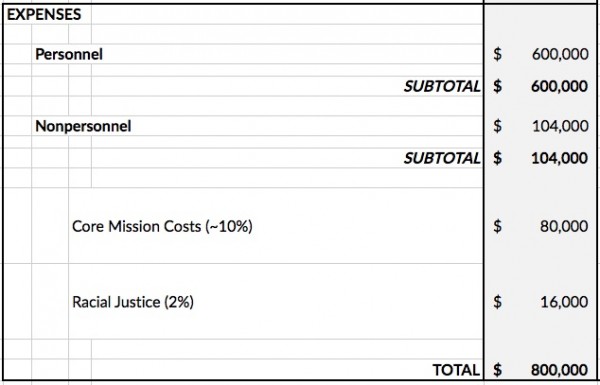
The short version is it’s working. Since we published this piece, we changed all of our budgets to be formatted this way, and have submitted them to the following foundations, all of whom accepted this line item without question.
The Kresge Foundation
The Ford Foundation
The Summit Foundation
The Overbrook Foundation
The JPB Foundation
Saint Luke’s Foundation
The George Gund Foundation
Hyde Family Foundation
The one exception was the Ford Foundation, which recently changed its policy on indirect costs to provide a minimum of 20% on project grants. Our combined Indirect Rate… and 2% for Racial Justice was still below 20% so the Ford Foundation asked us to simply submit a flat 20%. THANK YOU, FORD FOUNDATION!!!!
So, in just three months, we have raised $10,000 for racial justice trainings. We’re only 13% of our way to our goal of $81,000, but, hey, that’s 13% further than we were in October.
I also want to acknowledge Gehl Institute, Resource Media and EcoDistricts for joining ioby in using this structure. Although we have a long way to go before nonprofits can finally cast off this burden of using ‘overhead’ to evaluate organizational effectiveness, we believe there is real urgency in funding antiracism work inside the social sector today. So, rather than wait for the social sector to reinvent itself, we’re going to make incremental change today, with the tools we have, just like ioby Leaders do in their communities every day.
Erin Barnes, co-founder and Executive Director of ioby
Leaders Wanted
Have you ever wondered why we use the term “ioby Leader” to describe the people running the projects you see on our website?
If you have, you’re not alone—we get this question all the time! Here’s our thinking:
Why not… creators?
Leading an ioby project is a team effort. Individual initiative is key to making an impact, but leaders lead others! Successful ioby projects are more about getting people together than being a creative genius. (And in general we’ve found that the more people you have on your fundraising team, the more successful your project will be.)
Why not… users?
While ioby does provide an online platform for neighborhood projects, we don’t think of the people who take advantage of our resources as “users” (the way many websites do), because most of their work takes place offline, in their neighborhoods.
Why not… residents, or community members?
Everyone who lives somewhere is a resident (not all residents are “citizens,” so we also generally avoid that word). Everyone belongs to some kind of community. But a leader is someone who steps up and starts something.
We believe that everyone can contribute to the betterment of their neighborhood in some way, but ioby Leaders are the rarer birds who are driven, connected, and unafraid to ask for help or risk failure. They’re working at the vanguard of positive change.
Why not… participants, or grantees?
In the worlds of philanthropy and city government, it’s common to hear these terms, as well as phrases like “bottom-up” and “community input.” or “stakeholder outreach.” We’re wary of descriptions that paint resident leaders as low-ranking, passive consumers enjoying the fruits of benevolent decision making, or being optional voices in neighborhood planning. ioby projects are not about asking residents to rubber stamp plans that were drawn up without them; they are dynamic and neighbor-led processes that start at the beginning—with identifying problems and solutions—and they call for leadership, not just participation.

Starting to see a pattern here?
The term “leader” reinforces the agency, power, and motivation people have and need when they plant something good and see it through. To be a leader, you don’t have to have any special experience or credentials; you just have to lead.
Whether you’re thinking about starting your first project, or are a practiced hand at getting good done, we’re here to help you become a successful ioby Leader (with a capital L). Get started now: tell us your idea.
Looking for a blueprint to launch your project?
“Recipes for Change” is a new series of successful and replicable blueprints that can be applied to your ioby project. We’ve made them available to you online or in print-out form.
What are “recipes for change”?
Change requires collaborative action, time and plentiful resources. So, we’ve reached out to leaders in community organizing, advocacy, planning and other fields and asked them the need-to-know questions about getting a project off the ground. Within these how-to guides, our experts will not only cover the basics like industry standards and definitions, they will also show you how to apply these resources to leverage stakeholders or manage skeptics. These recipes provide a wealth of knowledge, alternative approaches and additional resources for your journey to making positive change in your neighborhood.
So, visit our new Recipes for Change page and explore what these experts want you to know about starting an ioby project.
Feeling inspired? Want to take action in YOUR neighborhood? If you have awesome ideas about how to make your town greener, safer, and more fun, let us help! Tell us your awesome idea right here. We’d love to help you get started today.
Racial Healing and Resident-Led Change
Today is the United States’ first-ever National Day of Racial Healing. It’s meaningfully situated between Martin Luther King Jr. Day and the inauguration of a new president whose election campaign fanned the flames of racial intolerance. It also gives all of us at ioby a good opportunity to reflect on the work we do and the people and projects we support.
We believe that the work we support in neighborhoods across the US is deeply, intrinsically linked to healing. Many of the resident leaders with whom we work live in neighborhoods that have undergone decades of structural racism and other forms of oppression, from redlining to police violence. When residents of a neighborhood like Buckeye in Cleveland, or Orange Mound in Memphis, come together to build something positive using resources from within the community, it’s both a reclaiming of power and an act of healing.
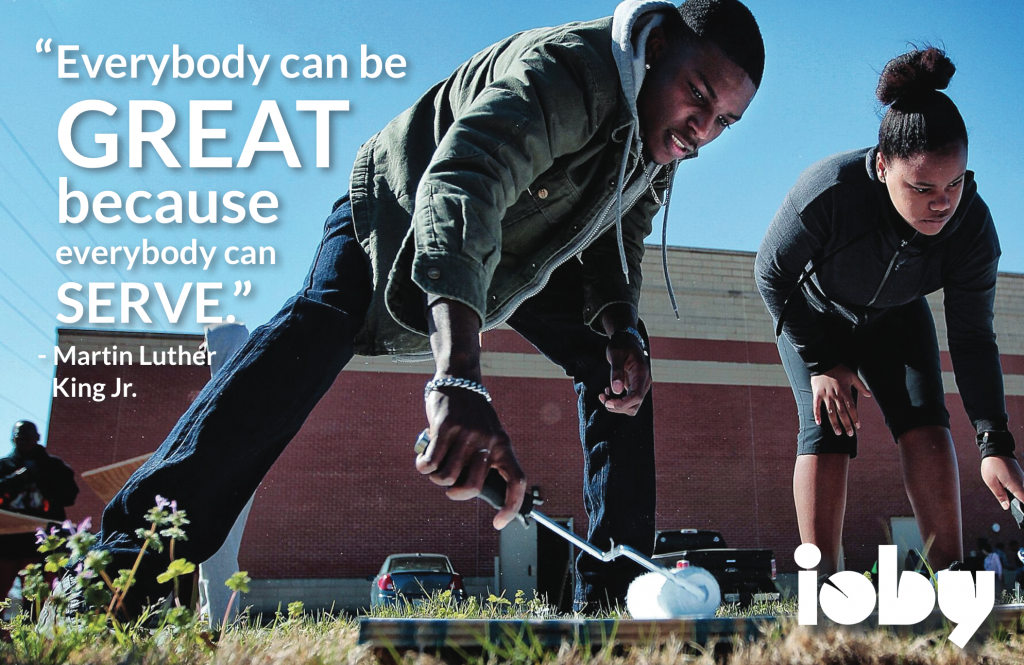
[High School students in the Heights neighborhood of Memphis work to brighten abandoned buildings as part of ioby project Community Bored Up]
Some ioby projects have an explicitly stated racial or social justice goal— Cleveland Action Legal and Jail Support, and the A Bridge That Bridges are a couple of recent examples. But overall, the more than 1,000 ioby projects show a great diversity: community gardens, prenatal yoga, protected bike lanes, Halloween parades, and little free libraries to name a few.
Although they seem to cover a lot of ground, a closer look at many of these projects reveals their commitment to addressing more deeply-rooted, systemic problems. UJIMA Refresh was started in response to the lack of access to fresh food in a Cleveland neighborhood, a direct result of decades of racist economic policy and disinvestment. The students attending Leadership Memphis Pathway to Prosperity College & Career Tours come from a county where almost half of high school grads, primarily students of color, don’t enroll in postsecondary education; their economic opportunities were systematically blocked by decades of segregation and redlining. And the list goes on.
It’s no mistake that the work of our leaders is aligned in this way; in fact, the focus on racial healing is something we as an organization are actively working to support. We have deliberately chosen to grow our presence in neighborhoods with a history of disinvestment. We believe that residents in communities like these should not have to move to live in a better neighborhood. There is already tremendous knowledge, innovation, and energy among individuals and groups who step up to lead positive change where they live. It’s our job simply to help provide the platform, training, and resources to help this work make quick, visible impacts. We believe that by partnering with neighbors who are already doing the great work of healing, we can work together to bring about positive change on the personal, local, and national level.
Especially in today’s divisive and disorienting political climate, our differences can feel greater than the commonalities that unite us, and it takes real courage to reach out to our neighbors and build something together in the spaces we share. But we believe that rooted in this effort is a transformative act of healing, and we will continue to dedicate our work to supporting it.
Do you agree? Want to lend a hand? Here are two great ways to take action:
- Search current projects on our website and help them succeed by donating a few dollars or committing to volunteer.
- If you have an idea to make your neighborhood better, tell us what it is and we’ll help you bring it to life.
- Need inspiration? Check out what the Moore family has been able to accomplish in Indianapolis.
Other amazing ioby projects working for racial justice and healing:
Saving our Sons and Daughters (project deadline March 11!)
Hollaback! Detroit: Taking It to the Streets
Friends of Chelsea Greenline Advocacy Group
Black Hills Unity Concerts: 2014, 2015, 2016
ATNSC Center for Healing & Creative Leadership
Flip the Table Youth Food Council
AWESOME PROJECT: Juicing it up for Cleveland food justice
Bianca Butts, an entrepreneur and resident of the Buckeye neighborhood of Cleveland, has long volunteered her time to a local nonprofit called HEAL: Healthy Eating, Active Living. HEAL is a community-led movement that works to make healthy eating and active living integral parts of the culture of Buckeye, Larchmere, and Woodland Hills. One of the greatest roadblocks the organization faces is that it is still simply too difficult to get fresh, whole foods and healthy prepared foods in Buckeye.
“So we’ve altered the behavior of residents – great!” explains Butts. “We’ve got people who want to be healthy and active and they want to eat well, but they don’t have anywhere to go get healthy food in their neighborhood.”

five a day for a great mood
First order of business, she decided: fruits and veggies! “I was reading a lot of books that talked about how uptaking your fruits and vegetables, natural whole foods, could really help naturally alter your mood, as opposed to taking pharmaceutical pills, which offer some relief but they also come with a host of side effects,” says Butts.
She started setting the time aside to make fresh, not-too-sweet, vibrantly-colored juices for herself and her roommate. They were packed with fruits and veggies – and even spices, like anti-inflammatory superstar turmeric – and when she saw how terrific they made her feel, she knew she had to share her new knowledge with her community.
and even in a food desert?
The Buckeye neighborhood of Cleveland is a food desert, which means that local residents don’t have reliable or sufficient access to fresh produce and other healthy foods. Buckeye’s main drag is lined with fast food joints, and grocery stores are shuttering their windows; you have to work hard to eat healthy here.
“Juicing was working really great for me,” explains Butts, “but living on Buckeye I could see the trend. I would juice at home, but every once in a while life gets in the way, and you haven’t gone to the grocery store. That’s when you want to run out and grab something on your way to work. And I could never do that in my community. And I got frustrated, and felt that why do I have to leave my community to access healthy food?”
One Business Administration masters degree, one entrepreneurship class, one merit-based free pass to a local food business incubator program, and a few taste-tasting parties later, Butts had her answer. She didn’t have to leave her neighborhood; she had to be the change she wanted to see. And her neighbors were ready for it. Even kids, when she gave out free samples at community events, came back for more. They asked questions. They said it was tasty. They wanted to know what turmeric was.
Today, Ujima Refresh, a juice company whose label states that it’s “Buckeye born, Buckeye bred,” is nearly off and running. This is not your $15, designer juice. It’s reasonably-priced, supremely fresh, healthy nectar for those who’ve never tasted truly fresh juice before. Juice that’s not off-putting to the palate of a novice who may have grown up on fried foods.
“Ujima is a Kwanzaa principle that you reflect on in preparation for the New Year,” explains Butts. “Ujima is the third principle of Kwanzaa, and it is collective work and responsibility. My premise in naming the business Ujima Refresh is that it is our collective work and responsibility to refresh our community. I’m just taking the angle of healthy food. That’s just my angle.”
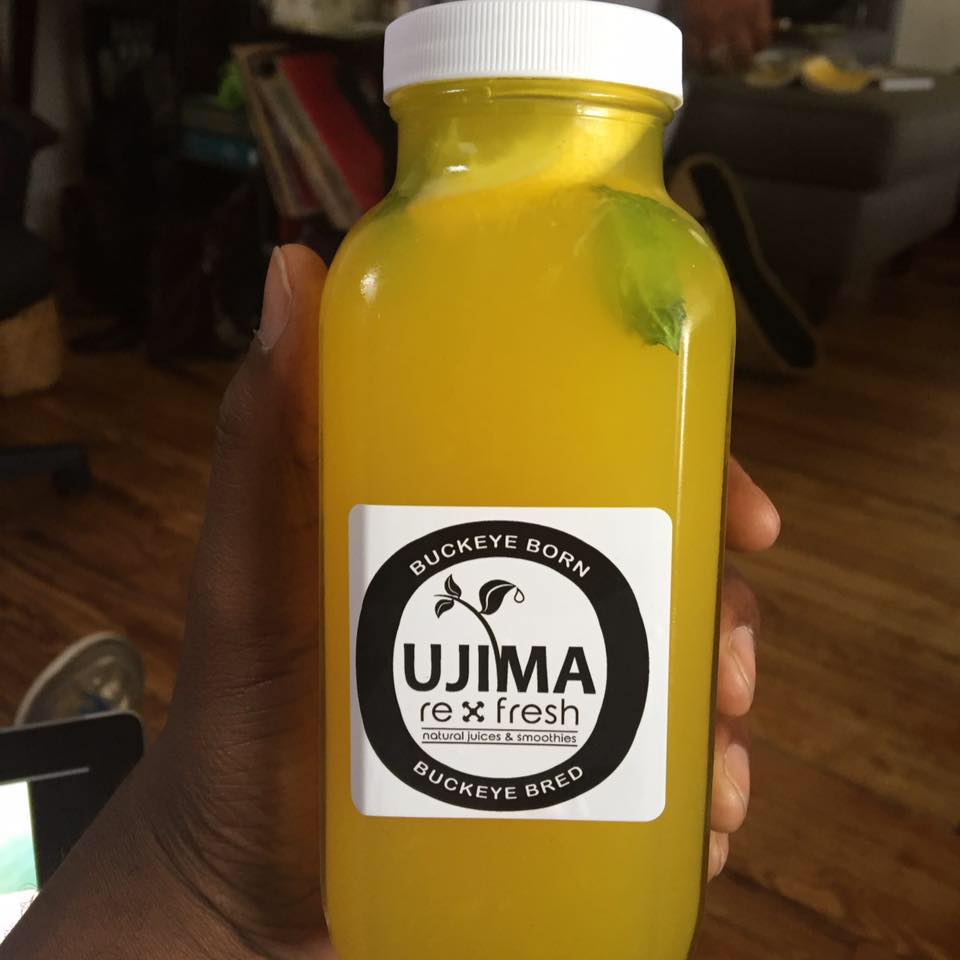
where to from here?
Butts recently wrapped up a super successful ioby campaign that will fund three upcoming educational community popup juice demos. Keep an eye on Ujima’s Facebook page for up to date info on these events, the first of which will be in February.
Meanwhile, Butts is actively searching for a retail space in Buckeye, and aims to have one secured by the end of 2017, leading into Kwanzaa. Ideally, the business will move into one of Buckeye’s vacant storefronts, serving up commercial vibrancy, employment opportunities, and local pride along with its delish juices. Production space is also on the to-do list, and Butts is currently seeking investors, as she works on developing a business model that will include a bottle return deposit program, on-site composting, energy efficient appliances and lighting, and, of course, local sourcing of fruits and vegetables.
All of which makes those juices sound even tastier to us.
Feeling inspired? Want to take action in YOUR neighborhood? If you have awesome ideas about how to make your town greener, safer, and more fun, let us help! Tell us your awesome idea right here. We’d love to help you get started today.
Pssst…. In OTHER ioby news: Do you have a project in mind for your neighborhood? Hesitating on getting started, because you need a green light from city officials, and you’re loath to ask? Fear not! ioby Action Corps is here! Click over here to learn from the pros about “getting to yes” with city officials. If they did it, so can you.
Watch: Action Corps experts on getting to “yes” with City agencies
Our newly-launched webinar series, Ask Action Corps, brings real-life challenges from resident leaders trying to implement a project to a panel of Action Corps experts. In these conversations, Action Corps members offer strategies, tools, and resources both local and national, to help leaders overcome common hurdles to getting good done.
Our first Ask Action Corps featured Cathy Marcinko, Justin Garrett Moore, Tommy Pacello, and Janet Boscarino talking about how to navigate regulatory challenges when planning an open space improvement project on city-owned land.
Watch the recording here, or email us for updates on upcoming webinars.
What’s Action Corps?
ioby Action Corps (beta) is our awesome network of experts who want to help resident leaders be successful in making positive change in our neighborhoods. They’re here to offer advice, support, and resources to help you implement your project. They’re ready for action and they want to help! Visit ioby.org/actioncorps for more info.
Ideas in action: Reasons to start with what you already know and love
In the last week, ioby has received a massive influx of ideas for neighborhood change from across the country. We are seeing firsthand, right now, that Americans are hungry to be a part of something positive.
Are you feeling called to start an ioby project in your neighborhood? What if you’re feel energized, but at a loss as to where to start? In conceiving of their own awesome projects, many of the highly successful ioby leaders we see in action tend to hew to this old advice from civic rights leader Howard Thurman:
“Don’t ask what the world needs. Ask what makes you come alive, and go do it,
because what the world needs is people who have come alive.”
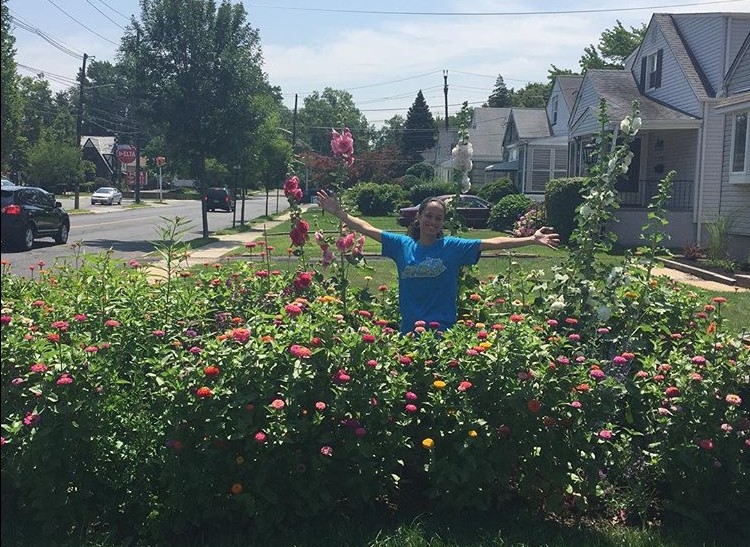
Do it because you love butterflies and gardens
Say WHAT? Don’t ask what the world needs? How selfish is that? But look at Naomi Montalvo, for example. She teaches pre-K at Juan Pablo Duarte school #28, in Elizabeth, New Jersey, where she’s recently started the most popular pre-K gardening club we’ve ever heard of. When she opened the doors, over 100 kids showed up to join; that’s over an eighth of the entire school population! The kids are learning how to create pollinator gardens that nourish the bees, butterflies, and other critters we need to keep our ecosystems running. They’re getting connected to green spaces in ways they haven’t before.
“Our kids live in an urban environment,” says Montalvo of the school’s population, “and that’s the kind of environment I grew up in. And there was no one really teaching us about nature; we didn’t have those opportunities. So now that I enjoy gardening, and I see what a pleasure it is and how much of a difference we can make in our environment, I want to share that with our students. They’re really excited. Even the faculty are excited.”
What makes the club so popular with the kids? We’re willing to bet that it’s Montalvo’s own passion for her hobby. She loves this stuff with all her heart, and it shows. Was the school’s lack of a pollinator garden club the absolute most dire, pressing need at Juan Pablo Duarte? Did it come up at every faculty meeting last year? Probably not. Has it enriched the school community and opened kids’ eyes in ways that amazed everyone? You bet. Was it exactly the right project for Montalvo to bring to life? YES YES YES.

Do it because you love soccer
Or look at Jamie Naylor, co-owner with her husband of Celtic Crossing Irish Pub and Bar, in Memphis. Her passion for soccer runs so deep that it led her to her husband, her job, her loyal soccer community, and now her ioby project – through which she’s helping to spearhead a local school’s first ever girls’ soccer team. In choosing to focus on what she already knows best and loves most, Naylor has scored a major goal. She racked up allies and funding in no time, and was off and running.
“We being husband and wife owning the bar,” says Naylor, “when you come to Celtic, it’s a very kind of neighborhood family environment. My husband and I have two children – a nine month old and an almost four year old. All of our regular customers are seeing them grow up. So they know that we’re passionate about soccer, we’re passionate about Memphis, about our neighborhood, and that we do a lot for the community, and so we wouldn’t ask if it wasn’t important to us.”
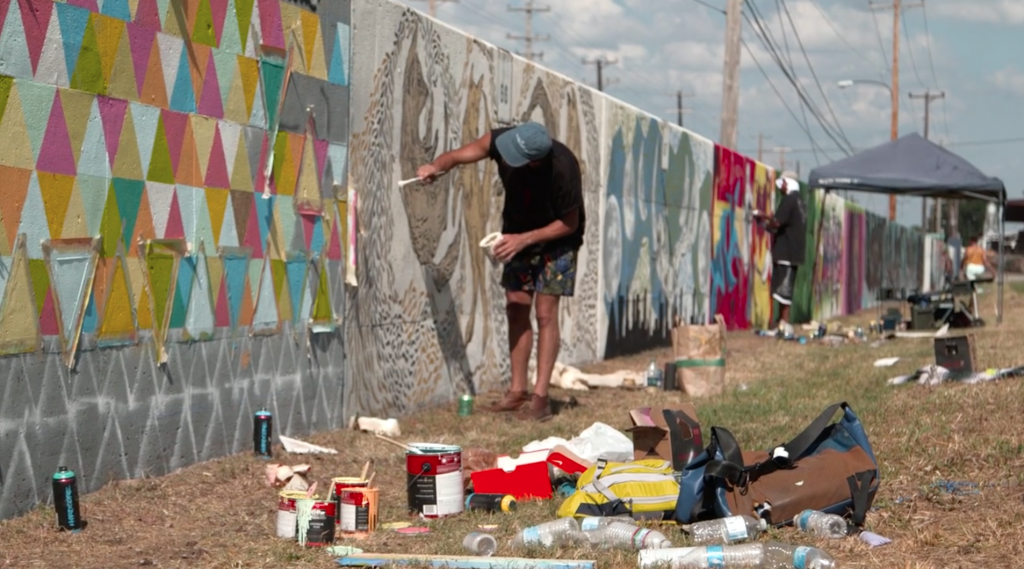
Do it because you love street art
Or how about Karen Golightly, a photographer who is so passionate about street art and graffiti that she was able to lure 70 of the world’s best street artists (sweet sweet video clip of it here) to come to Memphis and create a massive mural covering a third of a mile!
“They really are the most uncensored voices of a city,” says Golightly of the graffiti writers she so deeply reveres. Clearly, her collaborating artists and donors alike felt and responded to that reverence: they SHOWED UP and they joined the conversation, in a big way. The mural couldn’t have been a bigger success.
How about you?
So. Now the really fun part. What makes YOU come alive? When your friends think of what they appreciate so much about you, what hobby or talent or quirky passion of yours comes to their minds? What’s the thing that – when you talk about it with neighbors – makes their eyes light up? Makes them ask questions?
You know what it is. Will you share it with us? We’d love nothing more than to help you share that passion with your community.

